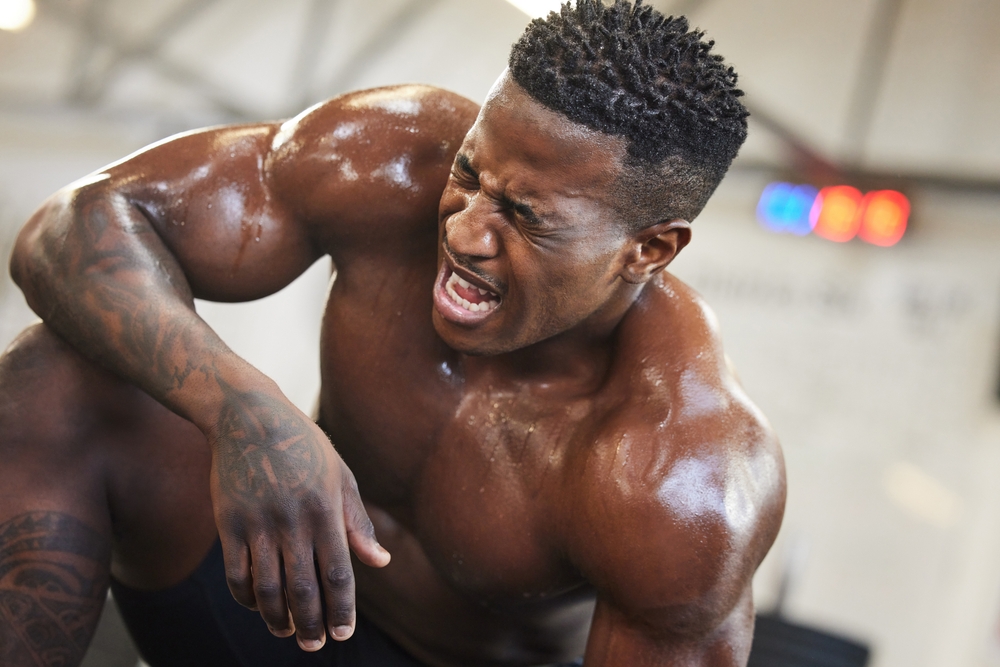Muscle soreness is a familiar sensation for anyone who’s recently intensified their workout regimen or returned to the gym after a hiatus. This discomfort, technically known as delayed onset muscle soreness (DOMS), is a sign that your muscles are undergoing the necessary adaptations to get stronger. While the idea of “micro-tears” in your muscles might sound unsettling, they play a crucial role in muscle development and strength gain.
What causes muscle soreness?
Muscle soreness arises from micro-tears in the muscle fibers, typically occurring during strenuous exercises that include eccentric movements—those that involve lengthening the muscle under tension. Examples of such movements include lowering a heavy weight slowly or running downhill. These small tears are part of the muscle’s adaptation process, allowing it to rebuild and become stronger. While this kind of soreness is a normal reaction to increased exercise intensity, the extent and duration can vary based on individual fitness levels and workout intensity.
What does muscle soreness feel like?
Muscle soreness can feel like stiffness, aching, or tenderness in the affected areas. It often peaks 24 to 72 hours after exercise, when the body is actively repairing the stressed muscle tissues. Depending on the workout’s difficulty, the soreness might make simple movements—like bending down, lifting objects, or even walking—feel uncomfortable. While it can range from mild stiffness to more pronounced pain, DOMS is typically harmless and a natural indicator that your muscles are adapting to new challenges.
Should you exercise when sore?
Deciding whether to continue exercising when experiencing muscle soreness can be tricky. Mild to moderate DOMS usually suggests that your muscles are in the process of adapting to the new stress. Light activity can aid recovery by promoting blood circulation, which helps deliver nutrients to the sore muscles. However, it’s essential to listen to your body’s signals—if the pain feels excessive or hinders movement, modify your routine. Focus on low-impact activities like stretching or gentle walking until the soreness subsides.
Tips for exercising while sore
When you’re sore, adjusting your workout routine can be crucial to avoid overexertion and injury. Here are some strategies to keep in mind:
- Switch up your routine: Instead of pushing through intense workouts, shift to lighter, low-impact activities. If you’ve had a heavy weightlifting session, consider cardio exercises like cycling or brisk walking to keep your body moving.
- Focus on mobility: Incorporating yoga, stretching, or mobility exercises like tai chi can help loosen stiff muscles and improve flexibility without putting them under excessive strain.
- Active recovery: Try gentle exercises such as foam rolling or stretching, which can relieve muscle tightness and speed up recovery. Keep the movements slow and controlled to avoid further stress on the sore muscles.
How to speed Up muscle recovery
Proper recovery is crucial to maintaining a consistent workout routine and preventing injuries. Here are some effective strategies for managing and reducing muscle soreness:
- Warming up is essential: Always start with low-intensity dynamic stretches or movements to increase blood flow to your muscles before diving into intense workouts. A proper warm-up prepares your muscles and minimizes the risk of injury.
- Fuel your body: Nutrition plays a vital role in muscle recovery. Eating a balanced diet rich in protein, carbohydrates, and healthy fats provides the necessary building blocks for muscle repair. Stay hydrated to maintain optimal muscle function.
- Massage and foam rolling: Techniques like foam rolling, massage, or using a massage gun can break up muscle knots and improve blood circulation, helping to alleviate tension.
- Try temperature therapy: Some find relief with hot showers, heating pads, or Epsom salt baths, which can soothe sore muscles. Others prefer cold therapy, such as ice packs, to reduce inflammation and numb discomfort.
- Prioritize quality sleep: Sleep is a critical component of muscle recovery. Aim for 7-9 hours of restful sleep each night to allow your body the time it needs to repair and grow stronger.
- Be cautious with painkillers: While it may be tempting to reach for NSAIDs (non-steroidal anti-inflammatory drugs) for relief, they can potentially interfere with the muscle healing process. If possible, manage soreness with natural recovery methods.
When to be concerned about muscle soreness
While muscle soreness is generally a sign of muscle growth and adaptation, it’s important to differentiate between typical DOMS and something more severe. Soreness should start to subside within three to four days. If it lasts longer or intensifies, it could indicate a more serious issue like a strain, muscle injury, or rhabdomyolysis (a rare but serious condition involving muscle breakdown). Pay attention to signs like swelling, bruising, or sharp, localized pain—these symptoms warrant a visit to a medical professional for a proper evaluation.
Conclusion: Embrace soreness as part of progress
Muscle soreness is an inevitable aspect of a consistent and effective workout routine. While it may be uncomfortable, it signals that your body is adapting, building strength, and improving resilience. By incorporating proper recovery techniques, staying in tune with your body’s needs, and knowing when to adjust your workouts, you can manage muscle soreness effectively. Understanding this process is key to long-term fitness success, ensuring that you remain on track with your goals while minimizing the risk of injury.















